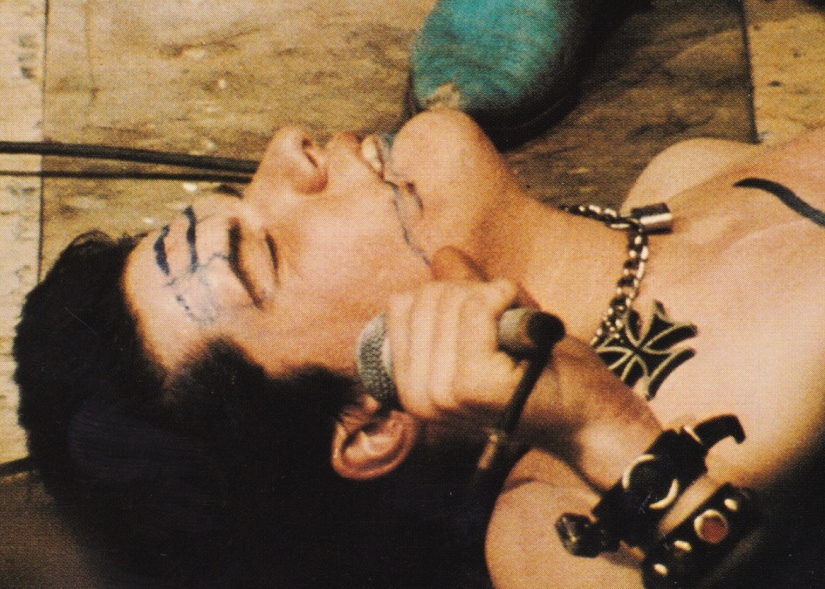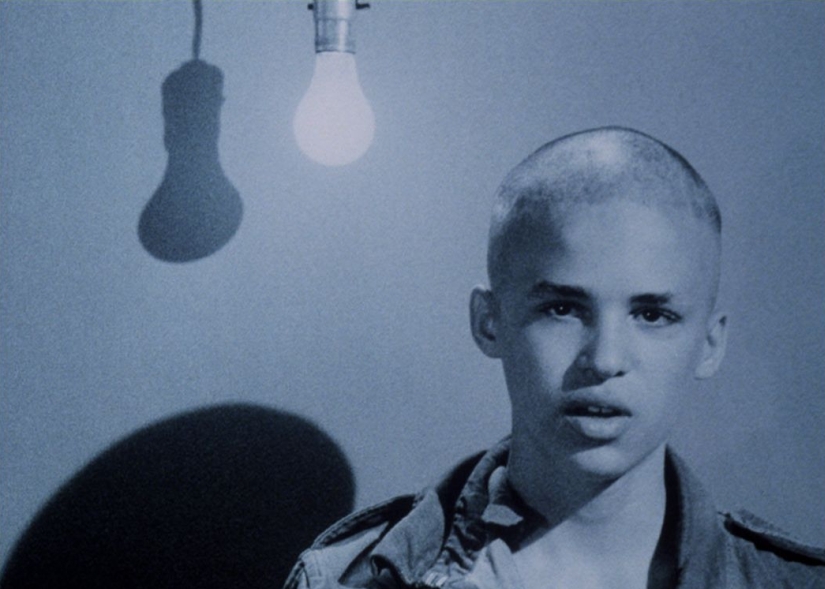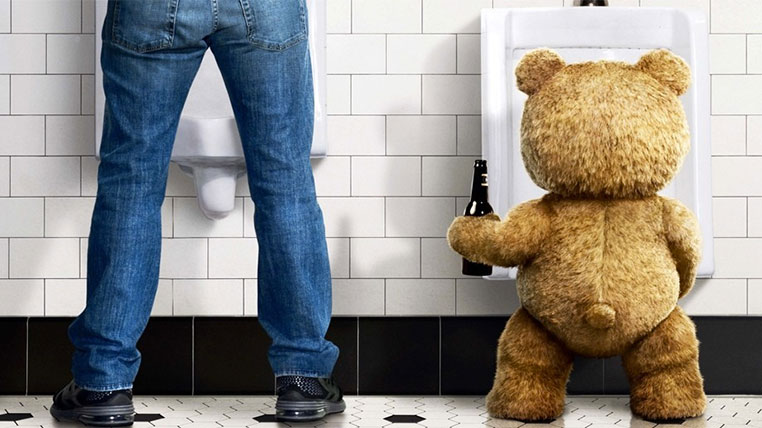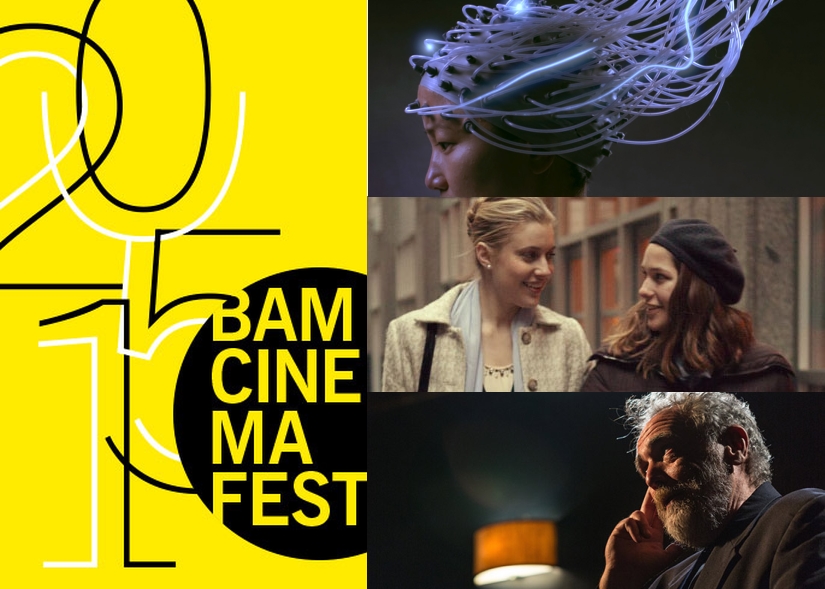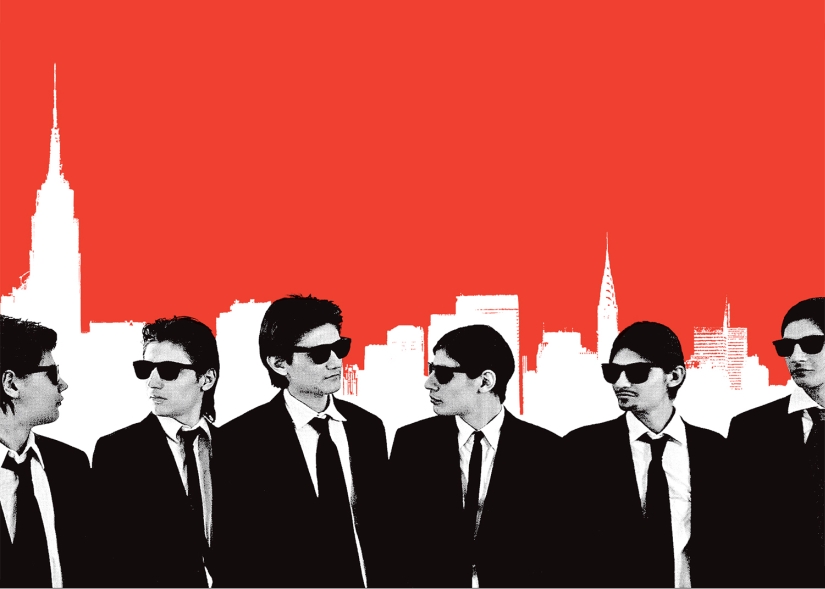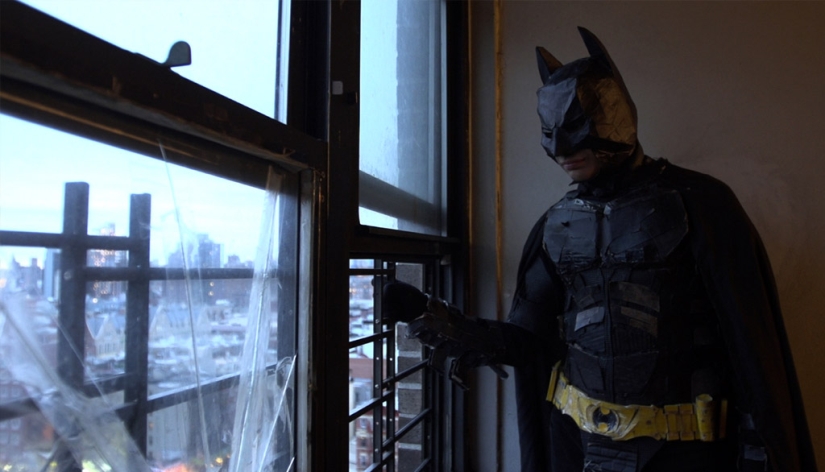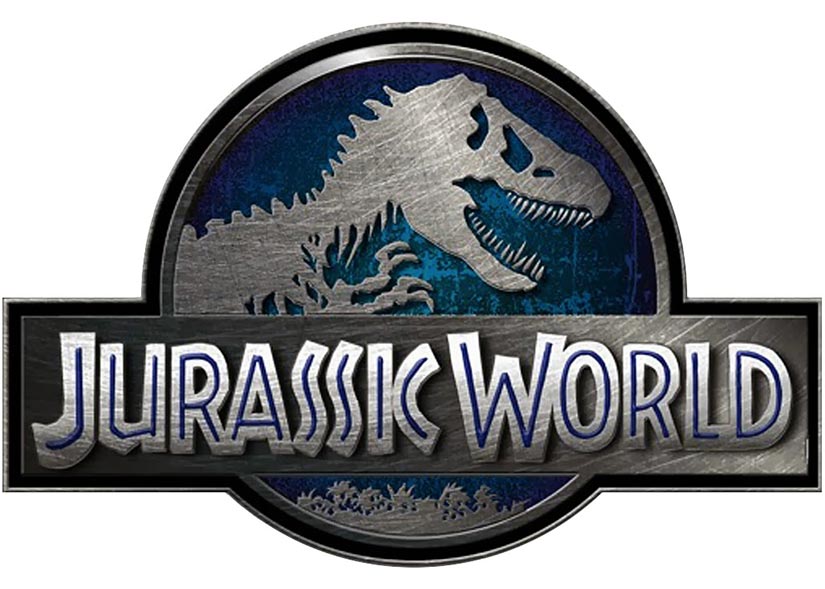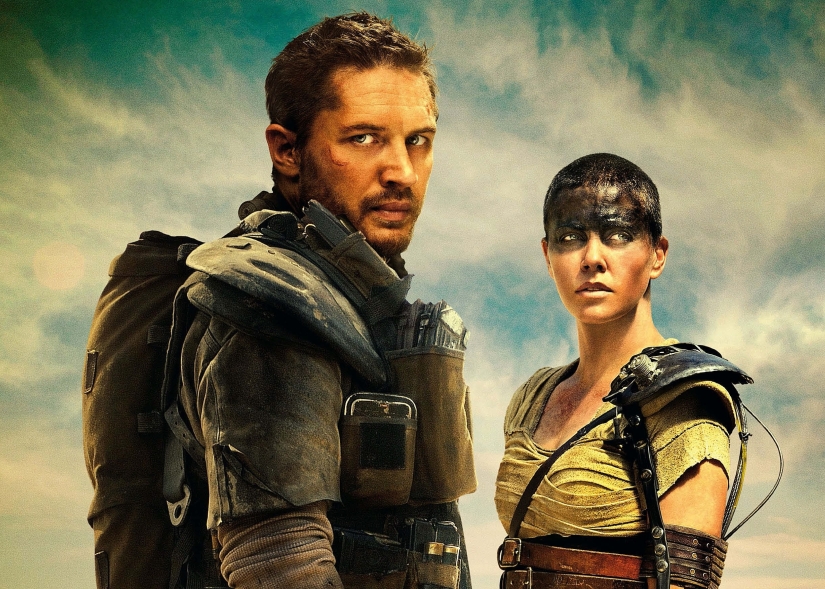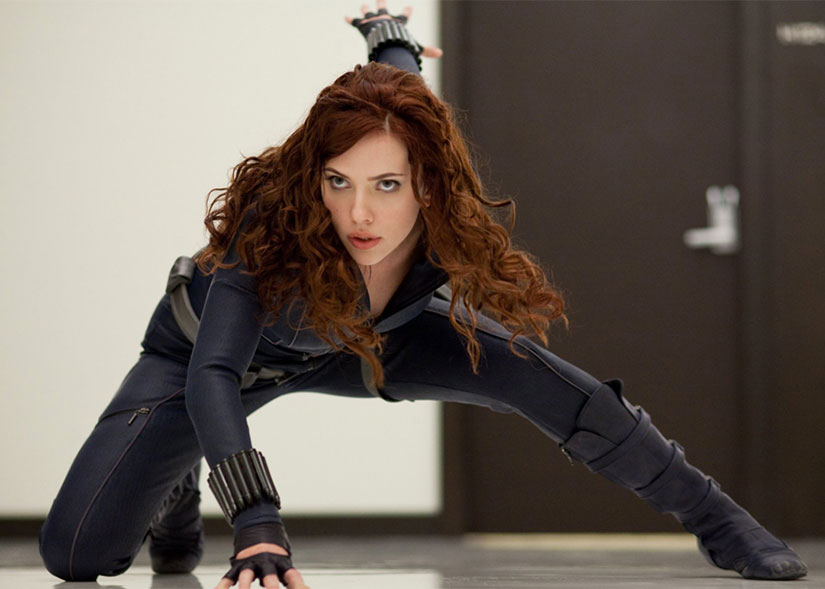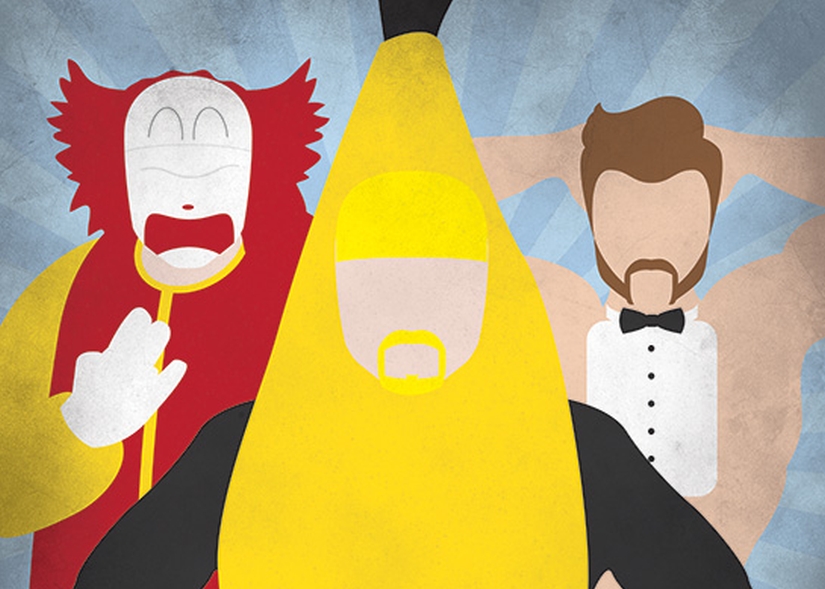The Decline of Western Civilization: To Live and Die in LA
Penelope Spheeris' The Decline of Western Civilization is one of those seminal music documentaries with a great reputation despite being rarely seen. Ditto its two sequels. Never available on DVD or Blu-ray, The Decline of Western Civilization trilogy is finally being released by Shout Factory at the end of the month. In addition, the first two films of Spheeris' Decline trilogy will screen at The Music Box Theatre in Chicago on Saturday, June 27th, with Spheeris in attendance. (For more information about the Music Box screening, click here.)
Even though I've only seen the first Decline, I'm excited for the trilogy's release in general. Maybe the lack of availability has increased the potency of the material and my desire to see it. (Absence makes the heart of the LA scene grow dismaler.) In the first Decline, Spheeris hung around LA punk bands like Black Flag, The Circle Jerks, X, and The Germs and included live concert footage; she caught the daily grind of music mag Slash; she interviewed kids at punk shows. In the process, her documentary captures the spirit of the scene as a whole: an aggressive sneer looking out over the ugly void of the 80s, the logical conclusion after the disillusionment of the 70s and the dashed hopes of the 60s.
Titling the documentary The Decline of Western Civilization seems cheeky, but it's fitting since the story of the movie is the quintessential American tale of the California bummer.
[youtube id="aiCTq_AHcqw"]
Think about it. Before westward expansion was over, the possibilities must have seemed limitless. Land, far as the eye can see, untouched, unspoiled, and with a little genocide, eventually ours. When gold was discovered, the west had riches untold, though only for a few; the rest were ripped off or died trying to eventually get ripped off. With the motion pictures there was the promise of fame rarely achieved, and during the Depression there were jobs that weren't worth the trek. For the generation of love, places like San Francisco seemed utopian, but the promise of the 60s was dashed by political assassinations capped by hippie bloodshed (i.e., the Manson murders, Altamont) that revealed a naive kind of hippie bullshit.
Early in The Decline of Western Civilization, the owner of a punk club stands atop a hill with the LA skyline muggy with haze. Cars on the freeways beneath churn out more and more smog. To paraphrase him, everyone went west expecting paradise, but when they got there, the air sucked.
To put it another way: In Tom Wolfe's The Electric Kool-Aid Acid Test, the summation of the counterculture's failure was the refrain "We blew it"; the equivalent in The Decline of Western Civilization is a disaffected teenager staring at the camera and sighing "Fuck."
While the punk scene seems like it ought to be about community, the film seems to chronicle a form of punk cannibalization. From interviews with punk show kids, they talk about an aggressive and violent streak. In one particular interview, Pat Smear--then of The Germs and later of Nirvana and Foo Fighters fame--admits to beating up girls just because; in the concert footage, pits open up and swirl, full of punk kids and punchy suburban bros and spit. Adding to the vibe of society's lawless decline, the security at the shows are decked out in leather jackets, like the lawmen from the original Mad Max.
It's not just punk-on-punk cannibalization, but in some cases self-cannibalization. Darby Crash of The Germs embodies the latter. He harms himself at shows, scratching his skin and drawing blood. Spheeris catches him on camera zonked out of his gourd. There's permanent marker smeared all over his face and body like he's part poster-child for disaffected youth and part punk-parody in the form of horse hair pottery. Crash slurs out all of the lyrics in a daze while beneath him are subtitles with the proper lyrics. It's funny and sad all at once, though maybe sadder than funny given Crash's eventual suicide from a heroin overdose.
From the clips I've seen, 1988's The Decline of Western Civilization Part II: The Metal Years is less like the first Decline and more like This Is Spinal Tap or the cult short film Heavy Metal Parking Lot. (Spheeris declined to direct This Is Spinal Tap.) The excesses of the second film are about rock star cliches, which might seem like the high-life or a dream fulfilled, but it seems like a steeper fall given the vapid nature of the rock and roll dream. Maybe the focus of The Metal Years was anticipated by the emptiness delineated in X's "Sex and Dying in High Society." 1998's Decline Part III (never released on home video), is all about the homeless gutterpunks of LA and their daily struggles to get by. It's a continued drop headed into the 21st century, because one of the constants of America is the California bummer.
Though not part of the LA punk scene, Johnny Rotten may have succinctly summed the trajectory of the decline of western civilization back in 1977: "No future." The rudderless world continues into the void of the 21st century. West isn't an option anymore, and the only direction left is down. It's fitting that Spheeris would end The Decline of Western Civilization with footage of the band Fear.
[Playlist of the Week] 10 Blockbuster Hits of the Summer
With summer right around the corner, film buffs everywhere are gearing up for the soundtrack releases. While most people aren’t interested in scores, we’ve found the small light with familiar songs being featured on each film's respective OST. In no particular order, here are 10 songs featured on blockbuster soundtracks of movies being released this summer.
4 Must-See Films at BAMcinemaFest 2015 (June 17-28)
BAMcinemaFest 2015 kicks off tomorrow night in Brooklyn. Launched in 2009, the showcase includes some of the finest and most talked-about independent films on the festival circuit from all over the world.
This year's BAMcinemaFest includes the The End of the Tour starring Jesse Eisenberg and Jason Segel, Nasty Baby starring Kristen Wiig and Tunde Adebimpe from TV on the Radio, special retrospective screenings of Larry Clark's Kids and Richard Linklater's Slacker, as well as a sneak preview of Noah Baumbach's Mistress America starring Greta Gerwig.
We were able to catch a few of the films screening at BAMcinemaFest 2015 early. Here are our picks for the four must-see films that are screening over the next week and a half.
For tickets and more information about BAMcinemaFest 2015, visit here.
The Wolfpack Is a Problematic Documentary Rather Than a Quirky Delight
Given its overuse, the word "problematic" can seem so mealy-mouthed and equivocal. Yet "problematic" is the word that came to mind after I watched Crystal Moselle's documentary The Wolfpack, which comes out today in New York and Toronto and opens in more theaters across the country next week.
The Wolfpack chronicles the lives of the Angulo brothers, six teenage boys and young men who live in Manhattan. For most of their lives, their parents forbade them from leaving their Lower East Side apartment. The six brothers and their sister were homeschooled and prevented from seeing the outside world. While there's a specter of physical and psychological abuse throughout the film, the Angulo boys find an oddly joyous outlet via home video recreations of movies such as Reservoir Dogs and The Dark Knight. Moselle captures the Angulo brothers just as they are beginning to get out of the apartment and assert their own agency.
There have been a few accusations that the film is a fabrication and that the story that Moselle found was too riveting to be true. That's not an issue to me. Moselle explained her filmmaker process and how she first encountered the Angulo brothers in various interviews (this interview Moselle did with Tasha Robinson of The Dissolve is quite good), so I don't think matters of fabrication need to be answered any further. What I found problematic was the film's form of presentation, which is both intriguing and yet incomplete. It leaves so many questions about the Angulo family either unanswered or seemingly unasked, and it made me wonder about the difficult and delicate relationship that documentarians have with their subjects when the subject matter is troubling.
[iframe id="https://www.youtube.com/embed/rDbqcMfUdlI" align="center" mode="normal" autoplay="no" maxwidth="825"]
From a distance, the situation of the Angulo brothers sounds like a potential casserole of indie movie quirkiness. Their forced internment in the apartment, their positivity in the face of the situation, their recreations of popular films, the verite style in which the documentary is shot--it's like some mash-up of The Unbreakable Kimmy Schmidt, Be Kind Rewind, and Grey Gardens. I sense the Angulo's film recreations helped endear The Wolfpack to the Sundance crowd, and there is something oddly quaint about seeing boys do a scene-for-scene remake of The Dark Knight Rises in homemade cardboard costumes. But that quirkiness and lightness is at odds with the grimness of the boys' situation. This is an intentional tension in the film's tone, and while a fascinating disjunction on one level, it took me aback and I'm still not sure how to feel about it.
The film recreation aspect seems like a feel-good selling point for The Wolfpack, though it's just one facet of the Angulo brothers' much more complicated interior lives. They're redoing a Tarantino movie with cardboard guns--how cute. They've been kept prisoner by a domineering and emotionally distant father--ummm, yeah. I kept wondering about the Angulos using film as a tool for socialization and whether or not it worked for them, and why their father who hated the violence and vice of the outside world would let them watch movies full of violence and vice (and then allow the boys to recreate it). There's so much to unpack and to explore that's glossed over. Though to be fair, all that material is so loaded and layered. Maybe a verite documentary can only delineate the broad contours of interior lives rather than the various textures and fine details--character sketches rather than full portraits.
The entire relationship between the boys and their parents similarly gets the contour treatment. While the boys' mother Susanne seems warm and receptive (though not all there), their father, Oscar, is cold and hesitant about saying much of anything. Before Oscar winds up on camera, he's viewed furtively. The film's structured in a way that suggests Moselle, through greater interaction with the boys and Susanne, is slowly earning the limited trust of the Angulo patriarch. Oscar sticks mostly to his room, a presence more than a person, which seems like a perfect analog to the emotional and psychological relationship that he has with his sons, his daughter, and his wife. We never get close enough to Oscar for a full sense of his motives. One wants to ask Oscar--confront him, even--with so many questions. Why did you do this to your children? How could you put a family through this? Oscar isn't one to answer, and maybe to maintain access to the boys and their story, Moselle had to be delicate in asking these questions, or even just determining whether or not these questions could be asked.
There's even more to the Angulo story that The Wolfpack either leaves unanswered or unasked. In the Dissolve interview linked to above, for instance, I learned that the Angulo daughter has Turner syndrome (TS), which is similar to Down syndrome, and I wondered about the challenges of raising a young girl with special needs in such an enclosed and difficult environment. That's never brought up in the film by the Angulo boys. I mentioned the issue of physical and psychological abuse as a specter, and that's precisely what the elephant in the room remains. While abuse is alluded to, I'm not sure if allusion is enough given how serious the matter is and how that must have been part of Oscar's power over his children and his wife. Late in the film, Susanne is speaking to her parents whom she's lost touch with over the years, and I wondered "What's the story there?" By the end of The Wolfpack, I'm still left wondering.
Moselle's approach, both distanced and delicate, may also have been her way to protect the Angulo brothers from her own opinion of their upbringing. Being too forceful with these boys and young men, or leading them with her own observations about their family situation might have done more damage than good. Instead of molding or training the Angulos to some emotional confrontation with their father, Moselle seems like she just wants to observe, to let them be themselves, and to let nature run its course. The old line is that sun is the best disinfectant, and by staying out of the way as much as possible, Moselle might simply be letting the Angulo family get some much needed light. Though to that, with so many questions to ask after seeing the film, the scrutiny on the Angulos will necessarily increase. Their story is so fascinating and it's also a work-in-progress, much like the children's personalities.
It's been said that we're in a golden age of documentaries. The Wolfpack is just one of three non-fiction films coming out this summer that will likely be on people's minds come Oscar time. (The other two are Matthew Heineman's Cartel Land and Joshua Oppenheimer's The Look of Silence.) I go back and forth about my feelings over The Wolfpack, yet I think it belongs in this company. On the one hand, The Wolfpack is a glimpse into these people's lives with an approach that leads to a number of problems, and yet it's precisely because of this approach that I can't stop thinking about the film. I can't stop thinking about the Angulo family either, for that matter, and that may be the sure sign that Moselle's film is ultimately a problematic success.
[Playlist of the Week] 5 Songs About Dinosaurs
Oddly enough, there are more songs about dinosaurs than you’d expect (we expected zero). In preparation for the upcoming blockbuster hit of the summer, Jurassic World, we’ve compiled a short list of five songs related to dinosaurs. We definitely ran the spectrum of genres to compile our list. Of course, we definitely left some off. If you have a favorite dinosaur-related song we missed, let us know!
Mad Max: Fury Road - Fear of a Feminist Action Movie
Mad Max: Fury Road is many things. It's an action movie masterpiece with the look and feel of a European comic book (think Alejandro Jodorowsky and Moebius). It's a post-apocalyptic descendent of Buster Keaton's The General and the cartoons of Chuck Jones, with careful attention to spatial relationships, cause and effect, and the art of set-ups and punchlines. It's a reminder of the power that visual language can command over mere words. It's a celebration of practical effects, daring stuntwork, and visceral filmmaking that we haven't seen in blockbusters for many years.
Mad Max: Fury Road is also a feminist movie. Or at least it's been hailed a feminist film, and that's made a lot of people uncomfortable.
I'm not just talking about tantrum-prone Men's Rights Activists, who've called for a boycott of the film because it's really feminist propaganda masquerading as a masculine ass-kicker. As is the nature of our weekly thinkpiece-culture calendar, what was lauded (or decried) as "x" a few days ago is now criticized for not really being "x."
Earlier in the week, politically conservative commentators began to throw cold water on the feminist credentials of Mad Max: Fury Road. Just yesterday, Anita Sarkeesian of Feminist Frequency tweeted that she didn't think Mad Max: Fury Road was a feminist film at all.
The word "feminist" is loaded, its associations so varied, and its ideological identity so personal. The mere idea of a "feminist" action movie is the source of scrutiny and anxiety, and it opens up a larger conversation of what feminism is and isn't, and also what people think it can be and should be, and even what is and isn't off limits when it comes to gender, genre, and the application of feminist ideas.
It's like ideological Thunderdome, but way more crowded, not as brutal, and without the bungee cords.
(spoilers ahead)
Damsel in Distress: The Lack of Female Superheroes in Hollywood
In the '90s, my parents encouraged my tomboy ways and let me play with the boys toys, as if back then letting girls play with boys toys was taboo. They’re just toys, right? Almost 20 years later, I went to Target to grab some superhero merchandise for the opening night of The Avengers: Age of Ultron. To my dismay, all of the merch was located in the boy's toy section; including the female superhero items, which wasn't more than a pen-sized action figure or two. As I picked up the last Captain America mask, I passed the bright pink aisles where all of the "female-friendly" toys were. There wasn’t a superhero Barbie, plush toy or action figure in sight. What gives, Hollywood?
After seeing the film, I walked out disappointed. Scarlett Johansson played Black Widow in The Avengers: Age of Ultron, a former USSR assassin trained from a young age who uses her skills for her own gain and later on for the good of mankind. As a big Marvel fan, I was excited to see the return of the strong, female superhero in a Hollywood blockbuster (besides the X-Men). Unfortunately, her backstory was watered down as her relationship with Bruce Banner (e.g. Hulk) in the film grew into a sappy "woe is me" superhero complex as she revealed she was unable to bear children. As if in the year 2015 this was the number one, sure-fire way to humanize a former Soviet-bred killing machine to American women. Why does her mystery have to be washed over by pointless sentiments of humanity? They’re superhuman. Then, in the end, it’s Banner who ends up leaving her behind, despite their plans to run away together. Whether or not this was an accuracy issue from the comics to the big screen, why couldn’t Black Widow be the one to leave? Left at the altar, even in fantasy, the woman is still portrayed to be more vulnerable than her male counterpart.
I’ll admit, there’s the occasional female powerhouse (e.g. Gamora in Guardians of the Galaxy, the ladies of the X-Men and Catwoman in The Dark Knight Rises), but the damsel in distress routine is getting blase to say the least. These are the women who know they’re needed for a team to function and most importantly, vital in saving the planet if not the universe. In X-Men: Days of Future Past, without the women of the X-Men, the people of Earth would live forever in chains and the mutants of Earth left to be brutally murdered by robots. Without Gamora in Guardians of the Galaxy, Star-Lord wouldn’t have been able to save the planet. In the comic book world, there are plenty of women superheroes, but until those books come to life in a way that empowers us mere mortals on Earth, it’s a man’s universe; real or fantasy.
When comics started in the '20s, it was a man’s world. While the comic book universe is booming with female leaders, it's Hollywood who pass over these women like they're minor characters. But, in 2015, something has to change. The question is: what is Hollywood going to do about it?
[Tribeca] Bodyslam: Revenge of the Banana! Shows Why Some Wrestling Gimmicks Succeed and Others Fail
In the documentary Bodyslam: Revenge of the Banana, directors Ryan Harvie and John Paul Horstmann follow the bizarre story of Seattle Semi-Pro (SSP), an independent wrestling promotion whose existence is put in danger by an outsider who becomes part of their roster.
SSP is different from other indie wrestling promotions. There's no ring, for one, just a stage and some mats. Gone is the illusion of athletic competition. SSP is also a comedy wrestling promotion, but it's not a witty meta-wrestling cartoon like Chikara Pro. In Chikara, wrestlers will lob invisible hand grenades at one another, or sometimes wrestlers (and the crowd and the commentary team) will spontaneously perform in slow motion. At SSP, one of the headliners is a drunken clown named Ronald McFondle, and another is a guy in a banana costume who dances to The Buckwheat Boyz's "Peanut Butter Jelly Time," recreating a 13-year-old internet meme.
Even though SSP is not my taste in terms of wrestling, it's an irreverent family and there's nothing wrong people coming together and building that sort of kinship.
A lot of drama in Bodyslam: Revenge of the Banana hinges on the clash of personalities both inside and outside the ring (or, in this case, on and off the stage at a dive bar). What the film illustrates in an oblique way is why some wrestling characters succeed and fail, and what makes a good hero (babyface) and a good villain (heel).

